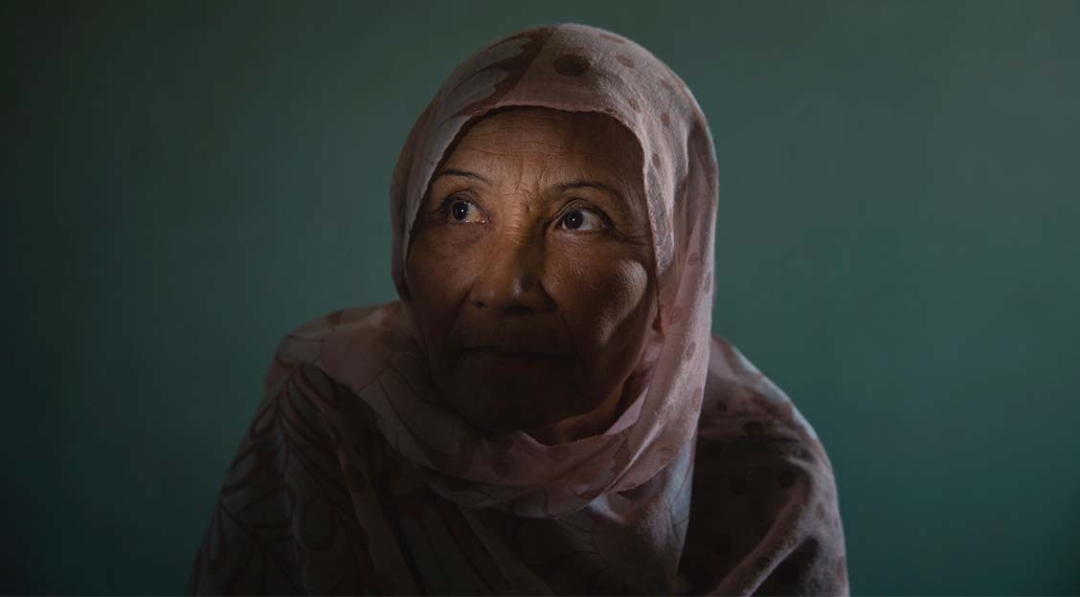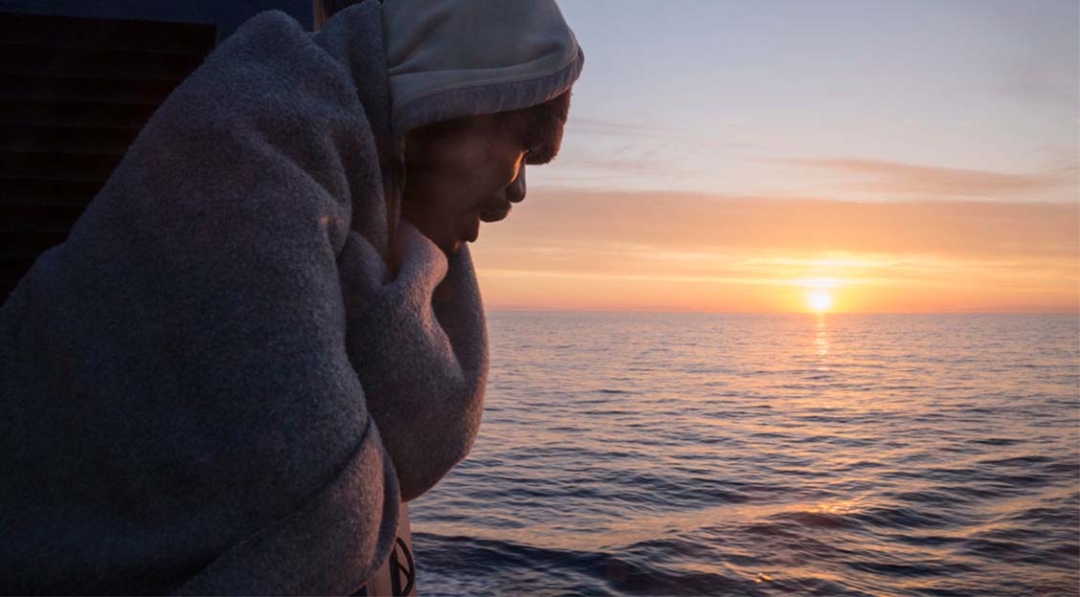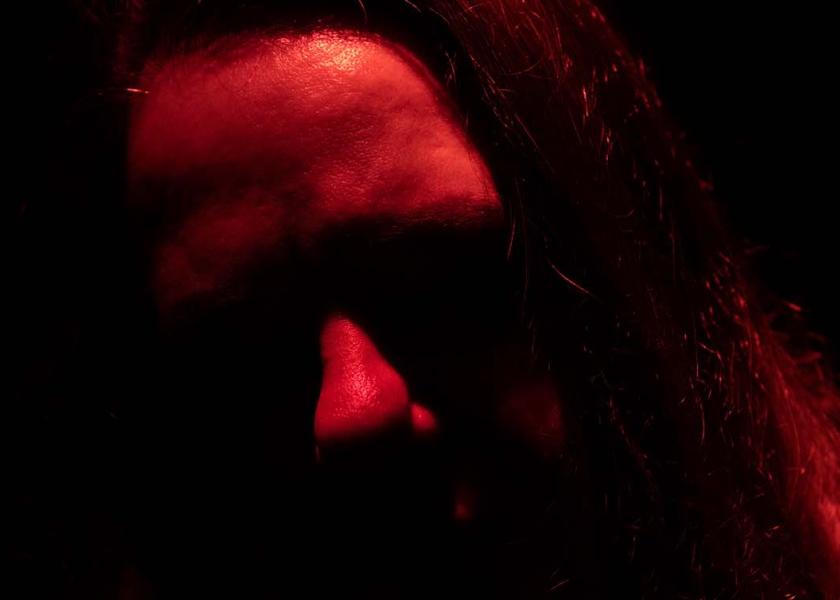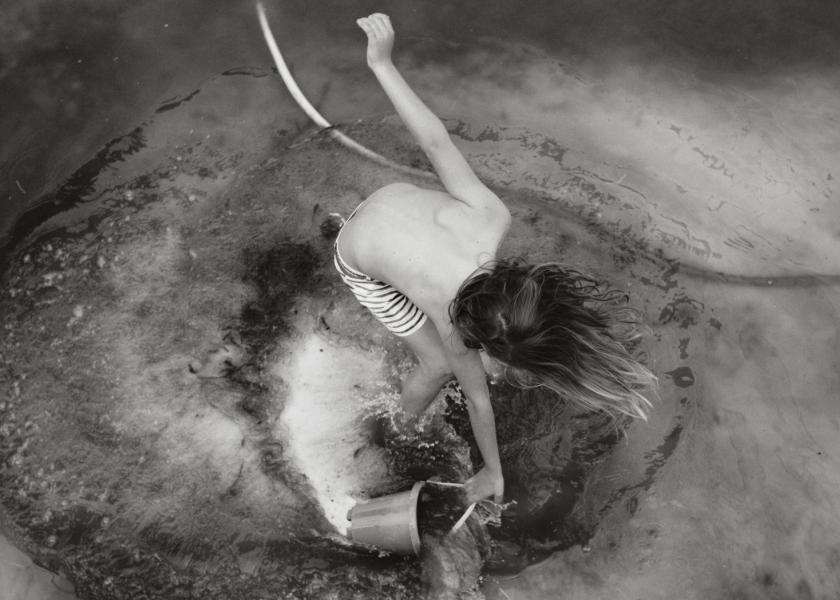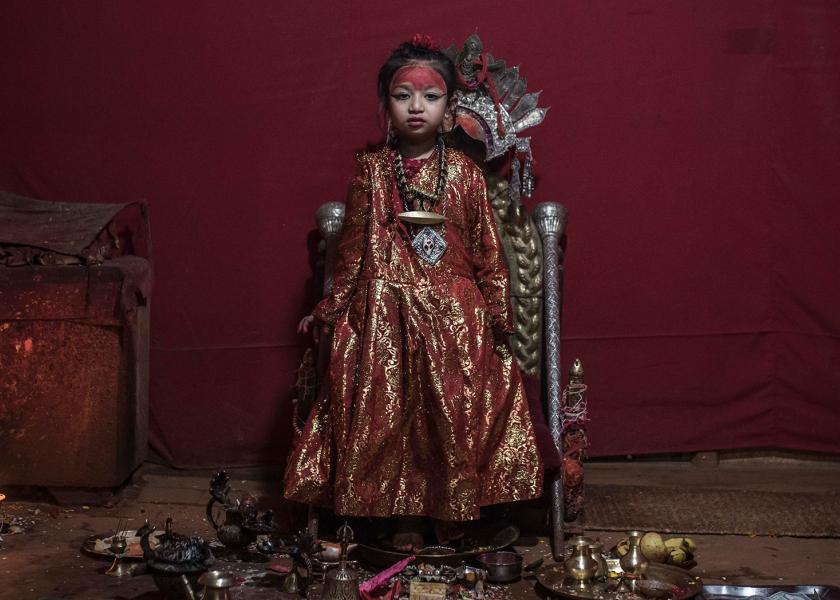Anna Surinyach
One image, a thousand questions

Photojournalist Anna Surinyach captures reality with a visual discourse that invites the audience to ask themselves questions and go beyond the moment. Humanitarian emergencies and global migrations are recurring themes for her clear and committed lens, through which she aims to change the discourse about population movements and debunk some of the fallacies created in the West around them.
As Anna Surinyach (1985, Barcelona) says, “images must create a thousand questions” through which to build a critical opinion of the facts. That’s the foundation of quality photojournalism. “Being informed requires effort, it’s not limited to observing a photograph,” declares the photojournalist. Through stories that seek an alternative narrative, she condemns situations such as the refugees in Lesbos, rescues from the Mediterranean or, more recently, the reality of families divided by the war in Ukraine. Her work has been exhibited in Buenos Aires, San Francisco, París, Barcelona, and Madrid, and her short documentary #Boza was officially selected as part of the 2021 Málaga Film Festival.
When did you discover your love for photography and where does your talent come from?
I was good at science, I come from a family of doctors, and I’d assumed I’d also become one. But when I went to register, I realised that it wasn’t what I wanted to do. At that time, more than being a photographer, I wanted to see what was happening around the world. I’d always travelled a lot with my parents in an RV, and since nobody in my family enjoyed taking photos, I was the one in charge of taking them. I thought that’s how I wanted to live, as well as explaining what I saw through images. I started studying Journalism and did an internship in my third year with Doctors Without Borders, that’s when I knew that was my way of life.
What do images convey beyond words?
What I aim for when taking photos is for them to create a thousand questions: Why does this happen? Which are the causes? It’s true that, sometimes, what sticks in your memory is an instant, what we’re experiencing with the war in Ukraine or the rescues from the Mediterranean, but an image doesn’t tell the full story. For me, an image must spark the interest of the audience and, from there, encourage them to look up more information.
“Building a consistent visual story that goes beyond an instant, that’s what photojournalism should be”
How do you develop that kind of visual discourse within your projects?
We consume copious amounts of images. War images aren’t only generated by professional photographers, they also reach us through other channels, often unfiltered. A professional photographer must make you see what could go unnoticed by someone else. In Mariupol, one of the most severely attacked cities during the conflict, a maternity ward was bombed, and images immediately reached us, but photographers continued to go there during the following days and told the story beyond the bombing. Slowly, parallel narratives to the bombs will start to reach us and those stories will help us to understand. Photographers don’t need to be the first ones on the scene but should be the last ones to leave.
How can you delve into a conflict situation?
Returning to the topic of Ukraine, photographers who’ve never worked on a conflict are going there now, or they only stay for a week. Professional photographers were already there before Russia began invading Ukraine, they even went in 2014 when the conflict began in Donbas. They’re the ones who are telling the story of what’s really happening, because they understand it more deeply. Building a consistent visual story that goes beyond an instant, that’s what photojournalism should be.
Is it possible to remain objective when faced with certain situations?
I’m the first to get emotional, it’s to be expected given what I’ve seen. When I take photographs of rescues or movements of people, I take a stance and photograph from there. I believe it’s totally unfair for people leaving countries like Syria or Iraq to be repeatedly denied asylum. Photography isn’t objective: you choose what and how to photograph to tell a story, but one thing is to take a stance, and another is to not be honest or not cover all the points of view. Obviously, when I see dead people in the Mediterranean or orphaned children because their parents wanted a better future for them, I’m overcome with emotion, and the day I don’t I’ll have to change jobs.
You’ve spent more than a decade photographing migrations, what made you focus on this reality?
When I started working with Doctors Without Borders, I focused on humanitarian emergencies and invisible diseases. Slowly, also because of the reality of the country we live in, I spent a lot of time in Melilla capturing people climbing over the fence and those who wait at Mount Gourougou in Morocco. This is the time in history when the most people have had to leave their homes due to violence. In the media, we see a lot of people crossing the Mediterranean, but most people that leave South Sudan, the Central African Republic, Somalia, Ethiopia, or Eritrea flee to neighbouring countries. I also started telling the story of these kinds of population movements to debunk the fallacy that they all want to come to Europe.
Who are your role models within photojournalism?
I complain a lot because when you study photography, most role models are men: Sebastião Salgado, James Nachtwey, Mauricio Lima… are figures I like, but there are others such as Donna Ferrato, who covers intimate topics related to gender-based violence, or Darcy Padilla. When I realised that most leading photojournalists were Western men describing the world, I decided to widen my lens and seek local photographers. I always talk about Carole Alfarah, who’s a Syrian woman who photographs what happens after the bombs fall. You have to make an effort to look beyond the big names, because it’s something that uplifts stories.
“Photography isn’t objective: you choose what and how to photograph to tell a story, but one thing is to take a stance, and another is to not be honest”
As well as being a photojournalist, you’re also a graphic editor at 5W magazine, which is your goal?
We wanted to tell long-distance and long-haul stories and give them and ourselves the time needed to dig deep. When we set up 5W, we realised there’s a part of the population who’s interested in receiving these kinds of features. As a graphic editor, the idea is to use images with awareness, photos that contribute and tell a story, not just filler images.
Which projects are you working on?
We’re trying to find resources to do something like the short #Boza I made with Séverine Sajous in 2020. This documentary talked about migration processes using the images that those involved generate naturally with their phones, something that helps to change the narrative and allows the audience to see the protagonists as equals. I’m also following stories about Afghanistan because there are hundreds of women who want to leave the country, but they’re not allowed to. I’m also documenting what’s happening with those coming from Ukraine to Spain. Finally, Europe has proven it can provide dignified shelter, but we have to see how the situation evolves, because the short-term is easy, the mid-term not so much, and the long-term is extremely difficult.

